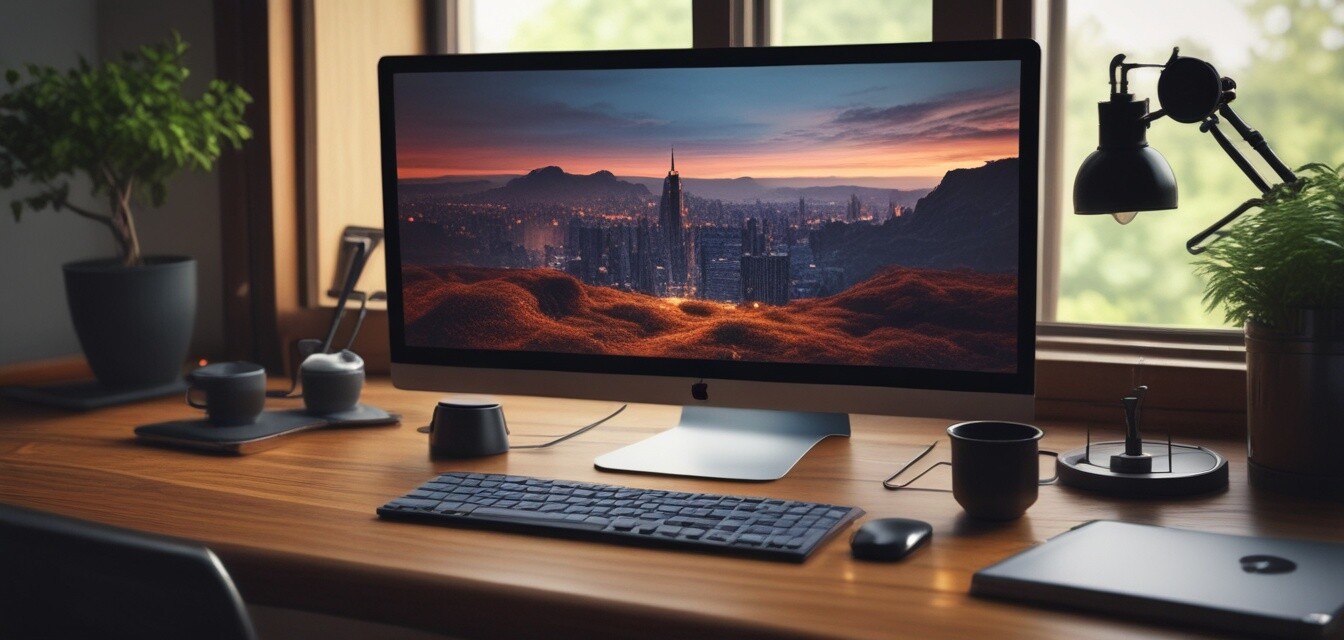
Selecting the Best Portable Monitors for Remote Work
Key Takeaways
- Portable monitors improve productivity and workspace flexibility.
- Consider factors such as size, resolution, and connectivity options for effective use.
- Look for lightweight and durable designs suitable for travel.
- USB-C connectivity is becoming the standard for portable monitors.
- Explore additional features like built-in stands and touchscreen capabilities.
As remote work continues to rise, the need for efficient productivity tools is more critical than ever. Portable monitors can significantly enhance your workspace flexibility, allowing you to create a dynamic setup wherever you go. In this guide, we will explore what makes a portable monitor ideal for remote work, the essential features to consider, and how to select the best one for your needs.
Why choose a portable monitor?
Portable monitors are specifically designed for on-the-go professionals, enabling you to expand your screen real estate without compromising on convenience. Below are some compelling reasons to opt for a portable monitor:
- Enhanced productivity: Multiple screens boost your ability to multitask effectively.
- Lightweight and easy to carry: These monitors are typically designed to be thin and lightweight, making them ideal for travel.
- Versatile connectivity: Many models offer various connection options, accommodating different devices.
- Space-saving design: Portable monitors can easily fit into laptop bags without taking up much space.
Key features to look for in portable monitors
When selecting a portable monitor, consider the following features to ensure it meets your needs:
| Feature | Description | Importance |
|---|---|---|
| Size | Typically range from 13 to 17 inches, ideal for portability. | Crucial for balancing screen space and portability. |
| Resolution | Look for at least Full HD (1920 x 1080) for clear visuals. | Essential for sharp text and images. |
| Connectivity | USB-C, HDMI, and DisplayPort options are common. | Needed to connect to your devices seamlessly. |
| Weight | Must be lightweight; around 2 pounds is ideal. | Important for ease of transport. |
| Built-in battery | A battery eliminates the need for plugging in on the go. | Convenient for outdoor and travel environments. |
| Touchscreen capability | Some monitors offer touch functionality for enhanced interactivity. | Useful in various applications like drafting and sketching. |
How to choose the right portable monitor
Choosing the right portable monitor involves assessing your specific remote work needs. Here are some helpful steps:
- Determine your primary use: Consider whether you'll primarily use it for presentations, graphic design, or simple productivity tasks.
- Evaluate your workspace: Assess how much space you have and how often you'll need to transport the monitor.
- Check compatibility: Ensure it supports the devices you plan to connect to, such as laptops and tablets.
- Research reviews: Look for customer feedback and expert reviews for insights on performance and durability.
- Set a budget: Determine how much you are willing to spend, and compare options within your price range.
Considerations for remote work environments
Different remote work situations may require specific features in a portable monitor. Here are some considerations based on your work environment:
| Environment | Key Features | Recommended Products |
|---|---|---|
| Home Office | Large screen size, high resolution | Multi-monitor setups |
| Café or Public Space | Lightweight, battery capability | Docking stations |
| Traveling | Compact size, durable design | Ergonomic accessories |
| Outdoor Use | Brightness, solar-powered options | Cool gadgets |
Pros
- Increased productivity through dual-screen setup.
- Flexible and easy to transport.
- Variety of models to suit different needs.
Cons
- Can be expensive, depending on features.
- Some models may lack durability.
- Smaller screen real estate compared to traditional monitors.
Conclusion
Investing in a portable monitor can significantly transform your remote work setup, offering enhanced flexibility and productivity on the go. By considering the essential features tailored to your unique work requirements, you will be well-equipped to make an informed choice. Be sure to explore our extensive range of computer peripherals and check out our latest trends in depth through our News and Trends section to stay updated.